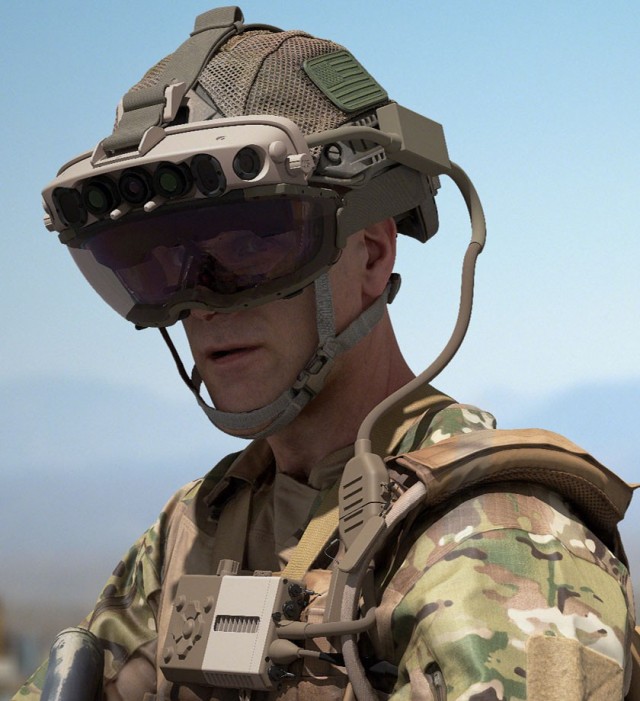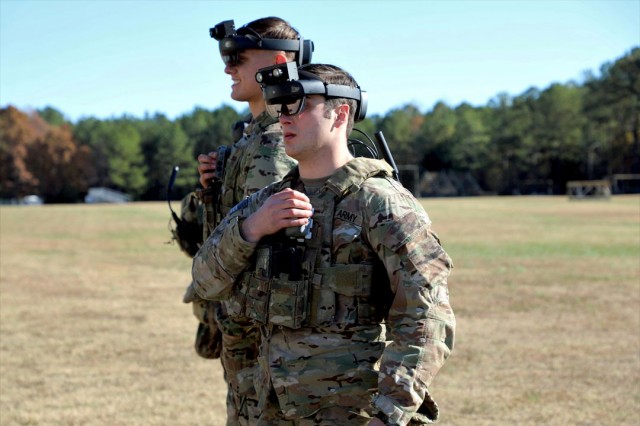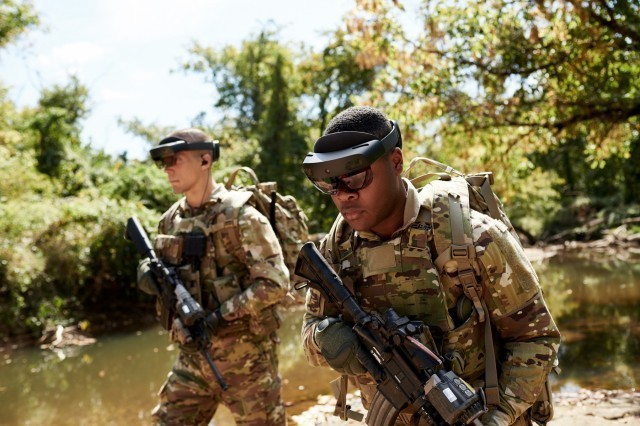
January 6, 2021 – The US Army Combat Capabilities Development Command (DEVCOM) Army Research Laboratory has recently announced that its researchers have discovered a new technique for using augmented reality (AR) to overcome bright lighting conditions during the day by using low contrast dimming highlights – something that DEVCOM says will open up new research questions that will improve warfighter AR and heads-up display performance in outdoor operations.
The US Army is continuing to explore new technologies to improve warfighter performance on the battlefield, and its researchers believe augmented reality is a vitally important part of that process.
“Imagine a Soldier of the future, searching for a target in an urban jungle,” said Dr. Chou Hung, a neuroscience researcher at the lab. “He looks out in the street and sees drones searching outside. He looks back down the dark hallway. The goggles instantly highlight the location of the target that the drone saw behind the wall, and the highlight is automatically adjusted to the right level in the dim environment, so that the Soldier also sees a second target in another room that was missed by the drone.”
According to Hung, it is difficult to make AR displays brighter due to the amount of power needed. In an indoor setting AR displays may work well, but outdoors, icons disappear and even at their brightest level, AR displays are up to 100 times dimmer than a bright sunny day. Therefore, the new technique involves low contrast dimming as opposed to highlighting of targets.
“We proposed a new approach, low contrast dimming, that can be used to titrate the visibility of target highlighting, but we were concerned that strong lighting variations on the retina as we shift our gaze would drown out the signal,” Hung said. “Our research shows that it should work; our visual system is actually very resilient to strong luminance dynamics; we can see very low contrast (10%) immediately after looking at something 100 times brighter.”
The discovery could help pave the way towards enabling the use of AR by US warfighters in challenging environments including desert, snow, marine and dense urban settings. The approach also has applications for other display technologies such as image intensifiers, infrared and fused night vision displays and also has potential for laser eye protection, according to DEVCOM.

Col. James Ness, Professor of Engineering Psychology at the US Military Academy, commented: “Indirect viewing optics are definitely needed as laser powers that shift blue when hitting optics designed to filter harmful wavelengths become transparent.”
The researchers studied high dynamic range, or HDR, luminance – images in which the brightest and darkest pixels differ by up to 100,000-to-1 ratio in brightness – and how it affects visual processing.
“We believe this should increase situational awareness and Intel, and avoid situations where information is lost because the display is simply invisible under bright conditions,” Hung added. “For example, if you’re in a hotel room looking outside, we see both inside and outside simultaneously, but a typical camera can only see one or the other because of limited dynamic range, and current AR technology would have the same display problem. This would ensure that the information is visible on both parts of the screen, when it’s shown against the outside and when it’s shown against the indoor environment.”
For more information on DEVCOM’s research, the results and rationale for using AR with variable occlusion in order to overcome daytime invisibility of existing AR and to titrate attention for aided target recognition have been published in the peer-reviewed Journal of Perceptual Imaging and also in the SPIE paper, Divisive display augmented reality (ddAR) for real-world warfighter performance.
Image credit: DEVCOM / US Army
About the author
Sam is the Founder and Managing Editor of Auganix. With a background in research and report writing, he has been covering XR industry news for the past seven years.
